#Indian legends
Explore tagged Tumblr posts
Text
THE HORROR AT LAKE HARMONY: HORROR SHORT STORY, PART IV
This story was published by Necrology Shorts in January 2010. THE HORROR AT LAKE HARMONY Legend continued that one day Megwa, a young buck who wanted to prove his worth as a warrior, made a discovery that chilled him to the bone and sent the other warriors on a mission to destroy The Ancients. Megwa had a best friend with whom he shared his childhood. They would hunt…
View On WordPress
0 notes
Text
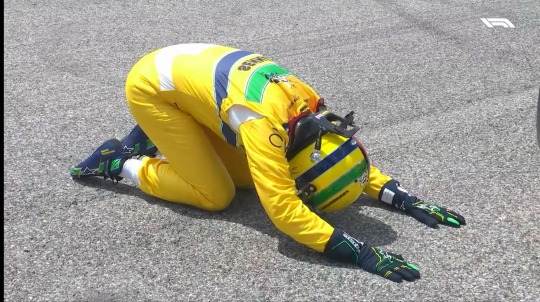
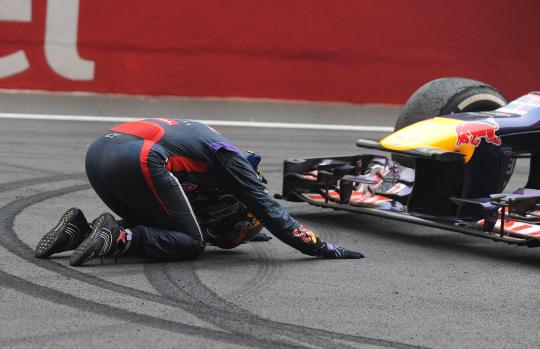

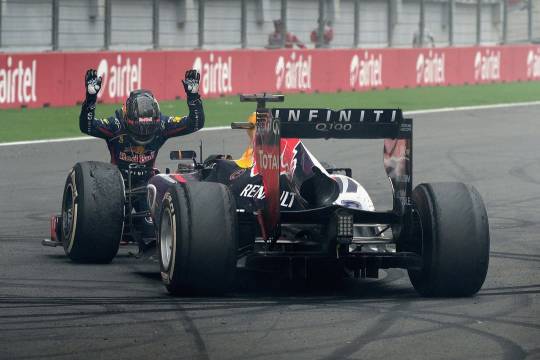
Sebastian Vettel Driving Senna's Historic 1993 Mclaren MP 4/8 2024 vs Sebastian Vettel F1 2013 Indian GP
#LEGEND#sebastian vettel#sv5#seb vettel#vettel#sebastian vettel x reader#ayrton senna#mclaren#red bull racing#senna#forever senna#indian gp 2013#imola gp 2024#imola 24#f1#formula 1
626 notes
·
View notes
Text
In Which I Ramble About Pavitr's Character Design and the Indian Cultural Stuff Related to It
DISCLAIMER: I'm an Indian, and these are all my thoughts and analyses, but I'm also just one person and by no means am I speaking for everyone. I am not all knowing, and I am not immune to being wrong sometimes. These points are all my own thoughts and stuff that I know through my lived cultural experiences and some history and book knowledge, but I've not particularly researched any of these. I'm just out here giving my take from what I know. This is mostly just going to be me rambling, okay? Okay. Let's go!
Anyway okay so I just wanna go from the top down:
No. 1:
First of all his hair
His fucking hair
This is one aspect that i k n o w I'm overthinking and probably wasn't as significantly thought out in the design but it just Spoke to me and by all accounts I'm not the only one
But I'm so glad we have him with his thick gorgeous fricking hair, especially them being like curly/wavy and slightly long instead of straight and cropped or whatever
Like. Indians usually have very thick and luscious hair, not everyone ofc but generally it's a thing, and it's considered a point of pride to have long dark thick hair.
And the thing is for the longest time the beauty standard in India was to have very straight and shiny hair, all the actresses and heroes were doing it, even though that's literally not the realistic case for a lot lot LOT of Indians. There's a pretty big variety of hair texture in India; some of it is regionally concentrated too, eg. in South India you get a lot of frizzy, tightly coiled hair that's rough textured, whereas curly hair is usually silkier and looser curled as you go Northwards,, Bengalis tend to have very wavy thick hair,, etc. By no means a rule or anything, it's just a thing that there's a lot of curl variety and a lot of it was for the longest time considered ugly and unkempt (there are some classist/regionalist elements to this stereotype also unsurprisingly) still is by some people,,, bc the standard was Shiny Straight Hair. It's a standard that's slowly shifting. It's currently leaning more on the wavy and voluminous side. But it's def a thing still.
All that to say, it makes me so so happy to see Pav with his curly-ish lush hair that he wears with such pride and style,, that are a symbol of his own pride and self care too!!!
Also the line about "coconut oil, prayers and good genetics" - I LOVE THAT REFERENCE AHAHABSSK, using coconut oil for the hair is a very common thing here, it's so so good for the hair and the scalp alike and it's relaxing to massage it in too.
I've seen people try to write Pavitr in fics as "quickly brushing some coconut oil through his hair" as part of his morning routine and. Um. That's not how it's done askaskjas, I don't mean to be rude to the writers at all, everyone does the best with what they know and no one knows everything, but also practically speaking that would be greasy and awful.
There are multiple ways to apply coconut oil, ofc. Coconut oil is often massaged into the scalp and rubbed into the hair like an hour before washing, sometimes with lemon juice mixed in, and then washed off when bathing. Some people, especially those with drier and finer hair, apply it as a regular after-hair-wash thing, too, but even so it needs to be rubbed in.
A really beloved thing we have is coconut oil champis, too! This is basically when you sit down cross legged in front of youe mother/grandmother, and she massages the coconut oil into your scalp and hair in a way that literally cures all tension and headaches and leaves your head reeling and is so so good for hair and stress and everything. It's a family bonding thing more than just a hair routine. It's not always done by the mom/grandmother ofc, it's just how most of us first experience it, and they have a technique that none of us can ever quite replicate to the same effect later. As we grow up, we often do it for ourselves and for others. It's a weekly or monthly or even just occasional thing depending on who you ask. But yeah that reference was great I love it dearly!
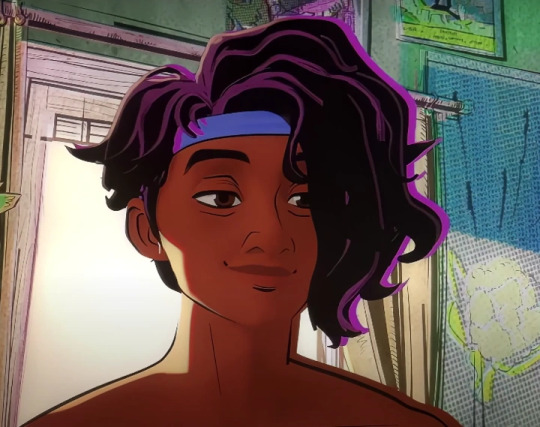
Also about the hair length
So in the current modern "civilized" standard (Indian schools and society in general tend to do a lot of shit trying to assimilate us into western culture and stamp out our own,, for example all my life I've been in schools where speaking Hindi and Telugu and stuff in class or in the hallways was Wrong and Forbidden and We Must Speak Only In English Bc We Are Educated And Cultured. This is so fucking hypocritical bc they would also have Hindi and Telugu classes and then criticize us for not getting it right or whatever), boys are meant to have short hair. Teachers literally single boys out in class for leaving their hair longer, not the exact length they set as the limit. This was my entire school experience; thankfully it doesn't seem to be the case in college, but that may just be bc I'm in an artsy college. In the workplace it's less stringent but it's still a thing.
HOWEVER, historically and culturally, long hair was considered good and even Important for both men and women. There's huge regional variations in this ofc; Maratha peshwas and higher classes and stuff for example wore a "pilaka" (idk what else it's called), which is the head shaven clean except a tuft in the middle that's sometimes braided. Brahmins still do it too.
But my point being, long hair was considered good for the most part, at most it would be worn in a bun for fighting and working,,, braids are a pretty big deal too. Having to cut your hair short=a symbol of dishonour and/or exile, or reserved for menial workers and so called "low classes".
(This is not stuff you even get explicitly told btw. This is stuff I've mostly inferred and studied from history and mythology and stuff , so there's no guarantee I'm 100% right)
Also, in Sikkhism (I'm not Sikh myself so correct me if I'm wrong, this is just what I know) having long hair is super fucking important for men. The hair is wrapped up in the turban, and the turban is a symbol of honour and pride and literally considered life. The long hair is considered sacred.
Removing the turban is basically a symbol of literally losing your honour pride and sense of self,, not just in Sikkhism, just generally at this point. Cutting your hair? Insult on injury.
Pavitr doesn't have particularly long hair ofc
But having grown up with such rigidly enforced things abt boys having very short cropped hair, it makes me so happy to see an Indian character who defies that.
Also!! Quick tangent about braids and their significance,, they're considered very beautiful and another symbol of pride, intricate buns and what not too! Just wanna drop this to give you an idea of what i mean:
In the Hindu myth of the Mahabharata, Draupadi, the wife of the Pandavas (she's a very interesting and important and beloved character, regionally also considered a goddess, she was a princess born of fire married to five princes and the vengeance for her honour literally fuelled the war for righteousness etc etc) vows never to braid her hair again until she has washed it in the blood of Dushasana, a man who forcefully tried to disrobe her in court (it's a whole myth of its own). At the apex of the war, Bheem, her husband, brings her his blood. She washes her hair in it and then for the first time in thirteen years, she braids it.
Braids are not as significant now but it was basically a Pretty Big Deal and I just wanted to talk abt it.
In Hinduism too the gods are portrayed with long hair, it's a Thing.
No. 2:
Okay so moving more downwards,, I have a bunch of Thoughts abt Pavs mask design!

Okay so obv we have the spiderweb-pattern that's a given.
But. The interesting parts are these:
The bindi-like design on his forehead.
Bc my point is
Sure that looks like a bindi. And that's beautiful in itself but I HAVE ANOTHER TAKE
Bindis are traditionally worn by women as a symbol of beauty, prosperity, and again, pride. But while nice, that's not quite a symbolism that fits imo
You know what else is ver similar where my mind immediately goes? A tilak.
The shape is kind of off for a tilak actually, a tilak is more of a U or a V with a dot or a flame-like stroke in the middle. So in that case it looks more like a bindi
But i really like thinking that it's inspired by a tilak too, bc
While a bindi is a decorative mark stuck or painted on a woman's forehead as a symbol of beauty and prosperity
A tilak is basically a mark that's finger-painted on the forehead of , usually a man but there's a softer smaller version for women too and ofc there are women warriors who got tilaks, for auspicious and blessing reasons. So in a Puja or ceremony, a tilak is put as a blessing and an auspicious thing, also meant to impart strength. The head of the household usually gets the most striking or biggest one.
Pandits usually wear tilaks for blessing purposes too, although their design is different and more elaborate than the ones given to others
Gods and goddesses had their own tilaks, some of them very distinctive like Shiva's
The part that applies to Pav is the warrior tilak
Basically before a king or warrior went to battle, it was customary to do a small sending off ritual and for the wife or mother to put the tilak for them and say "Vijay bhava" (may you be victorious)
It's still done for big undertakings and challenges like exams and new jobs and stuff.
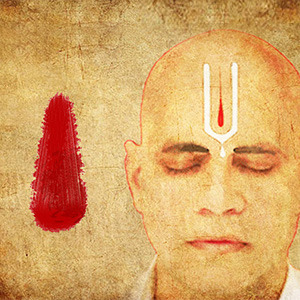
It's basically for strength, bravery and victory
The main difference in a bindi and tilak is the intent:
Bindi is for beauty
Tilak is for valour
Which. For a HERO. Just. Chef's kiss.
2. the markings around his eyes!!
I'm sure this has been said before, but it's very very reminiscent of kathakali makeup.
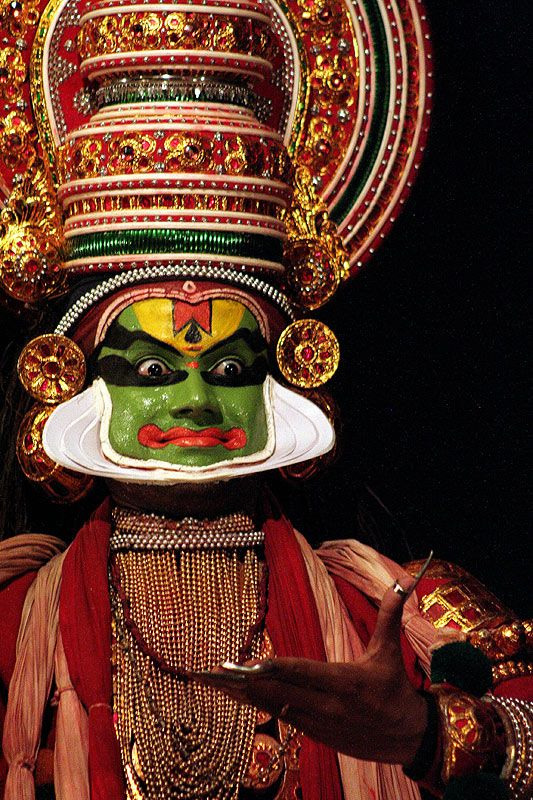
Regionally there's a lot of eye makeup stuff also btw. There are some absolutely beautiful tribal designs and regional designs with a lot of colours but I cant remember specifics rn
Also!! The very distinctive black lines around Pav's eyes?? I love them sm bc they feel so so based in kohl and kajal. Another huge beauty and often pride related thing.
There's even a whole thing where a mother or older sister will often rub a bit of her kohl off on her fingertip and press it behind their loved one's ear so that "buri nazar na lage" (no one's bad gaze catches you). It's called a kaala teeka
The idea being that you're so beautiful and/or cute and bright and lovable and nothing should jinx that and nothing bad should happen to you. It's very rare now and I've never experienced it myself but it's so so precious <33
3. the white markings on his cheeks!
I've seen that explanation of how it's reminiscent of Ganesha, the elephant headed god who is kind of a symbol of new beginnings, intelligence, prosperity, and a ton of stuff I don't even know how to explain honestly, but he's very cool and beloved and has a lot of Good Vibes™ and i love him basically.
I personally am reminded more of kathakali makeup again!! But that explanation is very cool too and i like it!! I don't know if I agree bc i think it m i g h t be a blasphemy to have that imagery on your face, afaik no one here does it for any reasons and we have literal festivals and pujas dedicated to Ganesha
But then again I am a human with limited knowledge and i don't know everything
I personally think the tusk like designs are very cool. However, I also think it would be a bit of a No No for religious reasons. I also think it reminds me more of classical dance face makeup and stuff.
I also think if they meant to make it a Ganesha reference, then he should only have a tusk on one side, bc there's a huge deal about Ganesha being "ekdanta" (transl: one toothed) bc he has a well known myth of breaking off one of his tusks to write a mythologically and culturally significant epic.
There are also a lot of actual cultural face painting things in India that are way cooler than the Ganesha thing in my opinion. So while that theory is cool, I don't personally agree with it. I could be wrong, again, idk what the design intent was exactly.
No. 3:
Next thing: this is a very very small thing and i only have a sentence on it, but i really appreciate Pav's neckline in his suit.

The neckline here? That's the kind of cut that's most typical of kurtas. Especially more ceremonial, kingly, wedding sherwani, or generally festive attire; a regular kurti might have a v-neck or something, but this curved collar? Very Indian and classy in a way I can't fully explain.
No. 4:
This next thing I'm going to go completely ballistic about, everyone hold on to your seats!!!
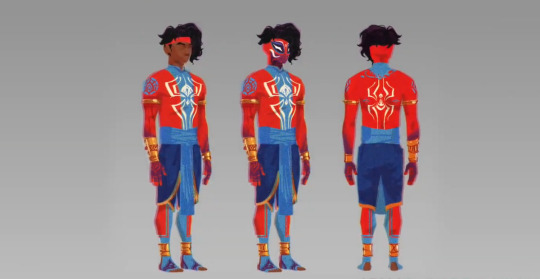
THE FUCKING MOTIF ON HIS UPPER ARMS. IT'S EVEN ON THE MEHENDI-ISH PATTERN ON HIS WRISTS AND HANDS. THE SPIDER SHAPE TOO. I AM NOT NORMAL OKAY
LISTEN.
LISTEN TO ME
TBIS IS CONFIRMATION THAT KRISHNA PAVITR IS CANON
HE IS SO SO KRISHNA CODED
Idc if I'm delusional, i DARE you to look at that blue design and tell me it doesn't look like a peacock feather
THE SHAPE OF HIS FUCKING SPIDER IS OH SO SUBTLY CURVED TO BE PEACOCK FEATHER SHAPED TOO
There is no human way for me to be normal about this i need a minute
Okay for context:
Krishna is a very important and beloved god in Hinduism. I cannot overstate the love I have for him, even being mostly non religious myself.
There is SO MUCH about him he is such a big deal and thanks to him being made a character in popular Indian cartoons and so many animated and live action movies being made about him, he is literally woven in the fabric of our collective consciousness and love for our culture
He's a mischevious and fun and chaotic and lowkey antiestablishment kid deity. He contains the literal universe. He has a deep abiding love for his people and his family and loved ones and the world he serves. He is a dancer, flute player, sweetheart, lover of life. He has a thousand wives, yet one Radha who he never married but is his literal immortalized soulmate. He guides heroes to duty. He is full of wisdom but also silly hijinks. He is so so beloved.
The peacock feather is his symbol! You could see the peacock feather anywhere and it's immediately OH KRISHNA! He wears a peacock feather, famously. In all his iterations, from childhood to adulthood. Peacock feather is his emblem.
Krishna is depicted through the peacock feather. It's become a very common motif in arts like mehendi and various textile arts to have peacock feather and peacock patterns; I'm sure that existed before Krishna too in several cultural circles but he is definitely a huge part of it since. There is a chikankari motif that is very recognisable that's reminiscent of peacock feather but I'm mostly unsourced on that, going off my own interpretation
But there's a definite link between peacock feather=Krishna=inextricable part of culture and art.
At least in North India. He's less of a big deal the further south you go. Still very widespread and overall loved tho.
So anyway seeing that peacock feather type motif on Pav?? Mixed with his Spiderman identity??? Is so amazing to me.
Krishna coded Pavitr real ✨
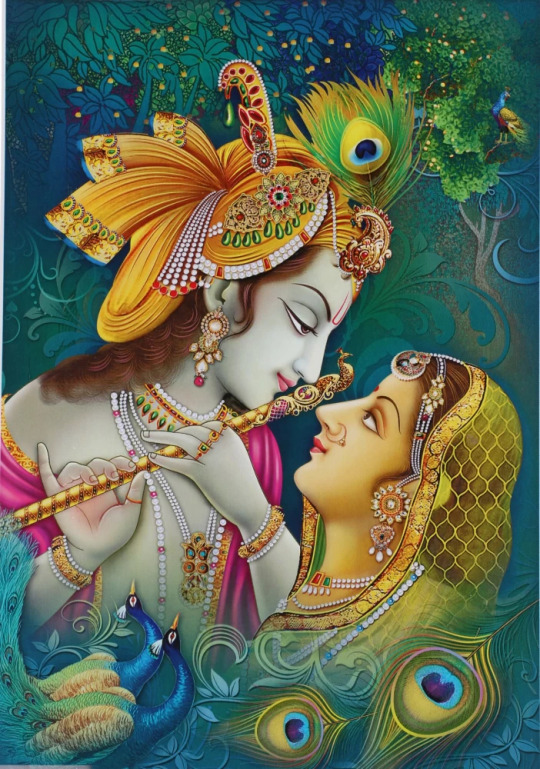
(Also yeah people have already pointed out that Pav's hand designs are based on mehendi so I don't need to go into that askjasjkas)
No. 5:
Also. Huge fan of his arm cuffs. It's just another Indian warrior thing; often in ye olde times and in mythology, the cuff would be a lot simpler, often just a thread with an amulet to grant you protection. But it steadily became fancier, and now it can be decorative or a valour thing or both
Very often just decorative now actually. Often seen in weddings and ceremonies too
No. 6:
Okay about his bangles now:
I absolutely LOVE THEM I love them so much I am so obsessed with them actually!!
So. First of all
I remember there being a confusion in like earlier fics especially on whether they were bracelets or damrus or bangles or what
And i have Thoughts
So first of all
They are not damrus/damarus.
Damarus are a musical instrument made of wood and with two beaded ropes to beat on the small drum-like ends. They're also symbols of lord Shiva who uses a damaru.
They are very different from what Pav wears and i remember my fucking whiplash when earlier fics called his bangles damarus. I think i choked on my maggi.
I don't mean to be rude to the writers ofc, they were doing the best with what they knew. But it's just very jarring to me to hear that
I think an explanation I heard was that Pav's web shooter design was inspired by damarus? Which yeah I get that and I actually wanna talk about it bc I very much see it. But they are very much NOT damarus themselves
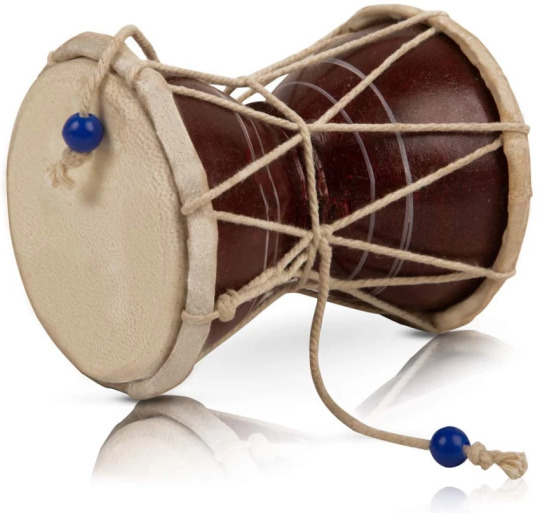
So
First of all i personally have never seen nor heard of the kind of bangles Pav wears which appear to have a strip of cloth in the middle? While being gold cuffs on both ends? Which is new and interesting actually and opens up aspects abt his character that i find really interesting
Bc first of all: that implies he made them himself from stuff he already had inspired by things he saw. It seems, at least to me, like he used bangles/kadas he had to make the shooters he uses, which are designed the way they are for easier slinging and his cool tricks with them which would be harder if they were solid gold, and also the shape when he does the cool yoyo-y trick and hits The Spot with it and everything is very damaru shape. Which is also pretty cool if it's meant as a reference to Shiva and his damaru (he's a very fierce god with the damaru) or a reference to the street performers who use it nowadays.
Either way - and also additionally the fact that PAV LITERALLY DOUBLED HIS BANGLES AS WEB SHOOTERS WHICH IS SO CREATIVE AND SMART - and developed his own whole signature skillset with it?? And made his own bangle/shooters as I said before????

My boy is PEAK jugaadu
He is the embodiment of jugaad
Never has anything been so true to the Indian spirit than jugaad
Okay so for context, the jugaad that I keep talking about:
It basically means makeshifting and/or inventing stuff you need from the limited stuff you have. That's a very simple way of explaining it. Just imagine that, but up the silliness level x100.
For example, a guy jugaaded a showerhead by poking holes in a sprite bottle and putting a hose in it and routing it to the tap.
Jugaad can be both very smart, and very funny and silly
And it usually involves combining useless stuff/trash/just stuff you had lying around to make smth that you didn't wanna waste money buying, and often ends up having more functions than the stuff it was meant to replace. This but it's also very crackheaded. Like idk how to explain. It's basically makeshifting, but it's just developed into such an Indian Spirit Thing™ that we have a word for it
So i love that Pavitr's bangles do all of that. He is a true Indian boy to his core!
No. 7:
Okay I have thoughts on his dhoti too!
So.
Blue.
I know why they used blue for his dhoti, what with the spiderman colours, the need to complement his bright red with smth softer, and everything. I get it and i love it so so much. What I'm about to say next is not a complaint against this at all, it's very good design imo
But.
Everytime I look at him in his fucking blue dhoti
I just remember all the times my grandmother has apprehended me and made me go and change for trying to wear blue or black at a Puja
Bc they're apparently unholy colours ;_;
Basically yellow, saffron, red are the appropriate holy colours. Now that i think about it, I've never seen a god or mythological king depicted in a blue dhoti or generally blue clothing either - farthest they go from the three i described is pink or green
I never really thought about it until my Nani pointed it out. I'm still not sure if anyone except her even knew or cared about it.
But that is the memory that bonks me on the head every time i Perceive the blue dhoti
Bro upgraded from funeral colour (white, which is his dhoti in the comics and absolutely infuriates me on a visceral level) to unholy colour askaskjjska it's so funny to me
Purple was still a luxurious colour, but generally warmer and/or lighter colours are The Done Thing. It's an old notion and the cultural connotations are now very diluted by Western influence and also none of us Caring about a lot of it anymore (not necessarily a good or bad thing particularly)
Indigo also has. Loaded connotations.
Because Britain did a Colonialism and a lot of Indians suffered for it. It's a whole history lesson.
I would rather not get into the whole details but basically Indigo (the plant from which the dye was made) was a valuable commodity and Britishers essentially forced farmers to grow only that, ignoring their need to grow food or sustenance or care for the land in general, especially in the Bihar-UP regions. There were eventually a lot of revolts where many people, esp farmers, died.
Basically a double whammy of starvation and death as a direct result of colonialism. It was a major part, historically, that sparked rage for the freedom movement
If you wanna learn more abt it you can search up Champaran farmer revolts!
Also about the drape of Pav's dhoti:
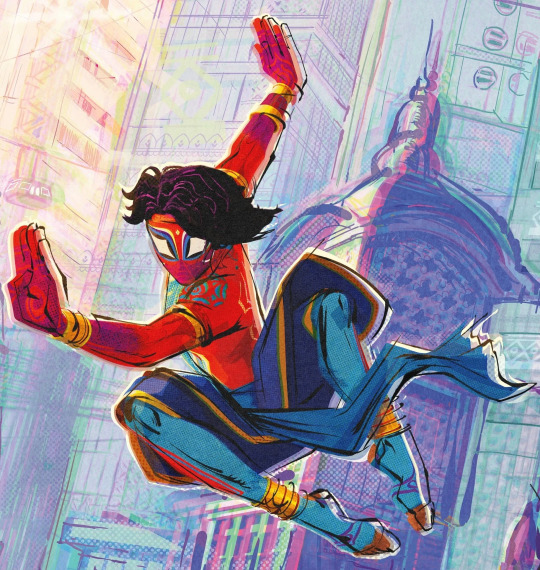
I've seen a couple of memes and reels abt how Pav, in an emergency, suiting up for Spiderman duty, would be taking an hour to drape the dhoti and stuff
And those are hilarious and i love them
But also
That's literally not even a proper dhoti -
So the thing pav wears is basically more of dhoti-pants with a cummerbund.
So okay I need to explain this better hold on
A dhoti is basically a sheet of fabric that is draped around the waist and down. The elaborateness of the cloth can vary vastly from intricately patterned silk and brocade, to plain white cotton with a thin gold border optional
The drape of the dhoti varies even more depending on region, occasion, occupation, and status. You can have everything from the casual simple towel like drape and tuck that some men wear to relax on a daily basis, to an intricate thing with many folds and pleats and tucks and the middle part that hangs (I forget the name for that) that would actually legitimately take hours and is often adorned with jewellery . To a thing that's flexible to move in and also looks very pretty and is genderneutral some dance forms call for.
Basically. The drape varies vastly. And it's all one cloth, maybe a second one for a separate cummerbund sometimes, I'm not that well versed abt dhotis tbh.
But the thing Pav wears?? It doesn't seem to me to be folded the way I've ever seen any dhoti
The way it's folded and shaped is not how those style of dhotis work. There would be a lot more pleats and folds, for one. But it's not shaped the way to match the less-folded dhotis either.
Now, I'm no dhoti expert, but that leads me to believe that's not a full on dhoti. What it's more likely to be is dhoti-pants
Dhoti pants are this fusion thing. It's in the name. I haven't seen it much but I know/think/am pretty sure its a thing, bc most Indian guys now don't know how to drape a dhoti either and it's a good solution. Worn like a pant, looks like a dhoti. Simple. A cummerbund for the middle drape, and you're set!
Also side note: the fold with the distinct two legs and the middle drape that Pav has? Is the most commonly depicted warrior and king drape,, at least in North and Middle India, I'm not as well versed about the South but I think it's the case there too. The gods are depicted in that drape too
I have fewer comments on his leg design, I like that it's reminiscent of mehendi even on his feet bc yeah that's also done on the feet, although rarer now and also a bridal thing
No. 7:
He has gold cuffs on his ankles that I really like!
Okay so here's the interesting thing:
I could be wrong, but
But that kind of thick ankle cuff is not actually an Indian thing?? At least not in the warrior hero context that a lot of his design seems based on. At least not of that shape and width.
What we do have though are very simple metal ankle cuffs put on (I think) one ankle of young kids for protection,, again a tradition I'm not very familiar with, it's more localised
The other thing we have that's more interesting tho:
We have payals and ghungroos!!! Which opens up so many exciting prospects to me because those are both dancer things
Like. The payals are ornamental. They are beauty things as well. All women would wear them, their elaborateness and style depending on status, money, and region ofc
They double as dance and performance things too ofc
But ghungroos are specifically dance things
Very very sacred and honoured to the dancers, too. Quite personal
(These are all little bells on the ghungroos btw!! Hundreds of them. They ring out when the dancers dance)

This is what Pav's ankle cuffs most remind me of. It's not the same thing ofc, and idk if the designers were even thinking of this.
But it would be really cool if he was inspired by ghungroos to have cuffs of similar thickness and placement on his legs. Perhaps even familiar to him hmmm?
This is me theorizing HARD to support my headcanon, but combined with Pav's classical dance-n-martial-arts-y moves, i present to you: Pav learning classical dance when he was younger (a thing that a lot of Indian kids do and only a few seriously continue for their lives) is real.
I rest my case
Like yeah it's known at this point that Pav's moves are based a lot off the martial art of kalaripayattu. Which is SO AMAZING AND I LOVE IT SO MUCH!!! But I also think this would be a cool influence alongside that, bc it really feels visible too.
No. 8:
The fact that Pavitr is barefoot is so so important and dear to me!!!
In Indian culture, you're supposed to take your shoes off as a mark of respect, before entering the ranabhoomi (literal transl: battleground, but not in an actual war with swords and shit ofc)
Being barefoot for pujas and in temples and on sacred ground in general is very important
As is being barefoot when you're walking onto a kabaddi or wrestling ground,, basically any fight that's supposed to be important and/or with honour. It's a respect thing for the opponent and for the earth you fight on.
There are a lot of contexts where being barefoot is important or a given
There's the prayer ground bc it's sacred and holy and you can't be dragging your dirty ass shoes there it's super disrespectful. You gotta enter with clean feet specifically, dirty feet are considered disrespectful too. that's also why there wil often be feet washing areas outside of temples here
Then there's the ranabhoomi that I just said, which is more of respect for your opponent and the earth. Respect to the earth especially is very important in the combat forms and sports I know of at least
Then there's the basic respect and tbh the hygiene thing too, of always taking off your footwear before entering another persons house. That one is more flexible, sometimes you can take it off inside, but the done thing is to take them off outside generally. Especially if you're a guest who's not particularly close. You'd be considered really rude if you didn't take them off at all. But again that still varies by person,, the older generations are way stricter abt it
Then the bride thing,,, it's actually a whole small ritual. The bride and groom will enter the groom's house for the first time,, which is considered the bride's new home bc misogynistic tradition so yeah. But basically it's supposed to be an auspicious beginning to a new home and life. (Btw being barefoot during the wedding ceremony is also generally required)
Usually, at least in North Indian tradition, a small vessel of rice is kept at the threshold that the bride must tip over with her foot when entering. It's for prosperity. Then she steps directly into a plate of a red liquid I forget the word for, but it's basically a sindoor paste type of thing. Her first steps into the house must be taken leaving those red footprints behind. That's for auspicious beginning
So Pavitr being barefoot is so so cool from a cultural and a character building standpoint
He takes his job seriously, he does it with respect and honour!!! He seems so chill and happy go lucky, but he's deliberate and respectful abt it!! And he's super connected to his culture too, bc you could just Not and no one would care, but it's so important that he does!!
So yeah!
That has been my full ramble askjasjkas. If you made it this far, have a cookie! Thank you and I hope this was interesting <33
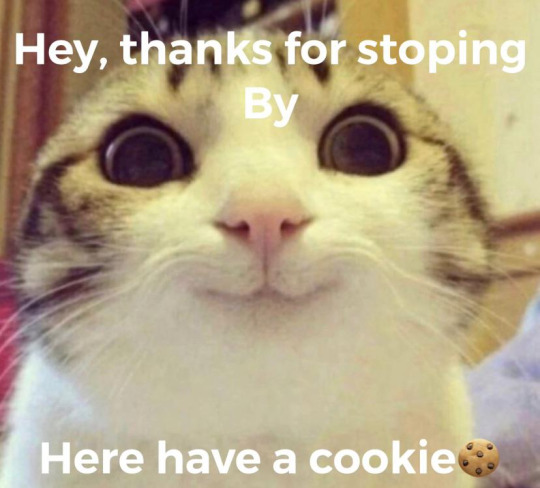
#pavitr prabhakar#atsv pavitr#spiderverse pavitr#spiderman atsv#across the spiderverse#spider man: across the spider verse#character design#rant#starr rambles#analysis#design analysis#character analysis#culture#indian culture#cultural references#pavitr my beloved#myths and legends#chaipunk#goldenpunk#spiderman india#india love#indian#long post
573 notes
·
View notes
Text

I have this exact book: Ghosts, Monsters, and Demons of India by: Rakesh Khanna & J. Furcifer Bhairav for those curious. And yes, sometimes some stories like these exist because of other cultures creating/attributing myths to other places.
Few famous examples: Griffins and the Indus Valley Worm
So Griffins and the Indus Valley Worm are creatures thought to have existed in India by Greek philosophers and scientists of the time. They made up the creatures but believed their origins to be "far exotic and from/to the east" a lot of storytelling has worked this way.
The Three Princes of Serendip (old name for Ceylon/Sri Lanka) is the first story of Serendipity (where we get the word btw) of just fun adventures (slice of life) about three Sri Lankan Princes. Only, it's not Sri Lankan in origin. It's Persian made up for entertainment ABOUT Sri Lanka.
Copy of the book for those interested:

It's a brilliant collection btw.
#Ghosts#Monsters#Ghosts Monsters and Demons of India by: Rakesh Khanna & J. Furcifer Bhairav#demons#Folklore#folktales#myths#myths and legends#indian fantasy#indian culture#indian#Griffins and the Indus Valley Worm#Greek philosophers#Three Princes of Serendip#Ceylon#Sri Lanka#serendipity#Sri Lankan Princes#Persian#global stories#south asian#southeast asian
29 notes
·
View notes
Note
For writing requests, how about sharing traditional holiday foods from their eras?
Oooh I love this request! I kept making myself hungry while I wrote it, but enjoy!!
***
“Everyone ready?” Time called out into his dining room.
A chorus of voices from all over his home responded: “Ready!”
Time gathered the clean plates, tower of cups, and boat of gravy, then followed Malon as she led the way into the dining room, her decadent lamb roast in tow. They were the first to set their food down on the heavy oak table, and Malon placed it right in the middle, shifting it so it sat just right and gazing down at her work with pride. Potatoes, carrots and sprigs of rosemary enveloped the steaming roast.
Malon turned to him, her eyes softening with fondness, and he reached for her hand before she had to say a word. Together, they sat at the table and waited as the rest of the group filed in.
The rest of his companions joined them as one, each carrying a tray of steaming food, or a plate with a delightful treat to enjoy once they had stuffed themselves silly and announced they had no room left for dessert. The pleasant tingle of spices greeted his senses, mingling with the sweetness of roasted pumpkin and the saltiness of seafood. The comforting scent of freshly baked bread came next, and Time sighed in appreciation. Dishes were set down with pride, compliments murmured, before everyone settled down at the table.
Malon and Time went first: “My grandmama used to make us a delectable roast every holiday season,” Malon said, her eyes drifting as she reminisced. “I may not be able to make it the same as her, but…”
“It’s something I look forward to every holidays,” Time finished for her, face softening as he met her eye. “My favourite meal, and the gravy she prepares is to die for.”
“Aw, you’re too sappy, fairy boy.”
“Only for you.” His words were met with boos and groans, and he took every one with a smirk. Only Sky cooed, eyes crinkling with warmth as he thought of his own beloved back home.
Wind jumped in next. “My Gramma always makes us this seafood paella. I couldn’t find the exact mussels and prawns she catches, but it’ll still taste like home!” Wind had gone above and beyond with presentation, mimicking Wild’s extravagance and creating rings of peeled red prawns atop a bed of rice. Mussels hadn’t been easy to find, it seemed, but Wind had scattered a few around the dish alongside wedges of lemon.
“It looks wonderful, Sailor,” Warriors said, nudging his young friend in the shoulder. “I’m sure your gramma would be proud.” Wind beamed under the praise, leaning into his friend’s side as they continued.
“The Gorons back home let me join their holiday celebrations,” Wild began. “Curry pilaf has always been my favourite of their dishes.” Time had no doubt the Gorons had introduced Wild to the dish; his eyes watered with the close proximity to the heavily spiced dish, and though he knew his eyes would stream, he would devour the meal and all its delightful flavours, even if he might regret it tomorrow.
“I can’t wait for it, Cub,” Twilight said, and though apprehension lay in his eyes, similar to Time’s own, he knew his descendent would devour the pilaf like a starved man if it made Wild smile. “And it seems Sky and I had similar ideas.” Twilight waved a hand over their dishes, sitting side by side on the table. Twilight had brought a stuffed and roasted butternut pumpkin, and Sky had brought a deep bowl of pumpkin soup accompanied by a fresh loaf of artisan bread.
“I take it your home town grows a lot of pumpkins?” Sky asked, eagerly eyeing off the stuffed butternut.
“The very finest,” Twilight said, a daring light to his eyes.
“I don’t know about that, my friend. Have you ever tried pumpkins at altitude?”
“Have you ever tried them on land?”
“Settle this later, folks,” Time cut in before the friendly banter could go any further. His stomach was rumbling, irritation brought on by hunger flaring deep within. They could continue their playful argument after dinner.
Twilight and Sky shared a look. They nodded to one another, their argument put on the back burner.
“Your stuffing skills are impressive,” Sky praised.
“I’ve never known anyone who could make a pumpkin soup so smooth,” Twilight said in turn, and with a grin to each other, they let it be.
“We don’t have as many dishes these days, when food is hard to come by,” Hyrule said, and all eyes turned to him and the treat before him, a decadently sweet aroma wafting from the pastry covered in a light green dust. “But things have been growing back, and this is one of the first desserts I ever had the pleasure of eating and then learning to make. Folks back home call it baklava.”
“Oh, my uncle used to make that for my birthday,” Legend piped up, eyes sparkling as they took in the dessert. Time wasn’t certain if it was eagerness or nostalgia that brought the glimmer to them. “I haven’t had it in years.”
Hyrule’s face softened. “I hope it can live up to his.”
“I’m sure it will,” Legend assured him, before realising what he had said and blushing. Clearing his throat, Legend pushed his own dish forward, a yellow rice dish with a colourful array of vegetables, cashews, and spices. “When we celebrate the holidays back home, Hilda and Zelda visit. Ravio and I always make this biryani together.”
Warriors hummed, a knowing look on his face that made Legend blush deeper. “Oh yeah?”
“Shut it, you,” Legend snapped. “What did you bring?”
With a roll of his eyes, Warriors pushed forward his dessert, a round pudding topped with a drizzle of white icing and raspberries scattered on top and around it. “Plum pudding. Back in the war, we didn’t have many options when it came to holiday treats, but this one was always my favourite, and it put a smile on my soldiers’ faces when I brought it out.”
“I’m sure they appreciated it,” Time said. “What better way to boost morale than dessert?”
Warriors chuckled. “That was my thought process too. It boosted the spirits of everyone, myself included, gave us strength when we began to wane…”
“What an honourable thing to do,” Time said, and Warriors smiled. “Now, I believe we have one more dish—Four?”
No dish lay before Four, and he looked away shyly. When Time followed his gaze, he saw an odd little structure resting on his kitchen counter. “My dessert isn’t for us to eat,” Four said, and then quickly hushed complaints. “No, let me explain. Back home, we have a special tradition where we bake gingerbread and create little houses from it. We leave these houses out in the living room for the Minish, and come morning, the house has been eaten.”
“What’s the point of that?” Legend asked, earning a glare from Four.
“Let me finish.” With a roll of his eyes, Legend waved for him to do so. “The Minish always help us out, planting rupees and kinstones in the grass. In turn, we give them this. And sometimes, if they enjoy the meal enough, they leave us little presents to find come morning.”
“That sounds like a wonderful tradition,” Time said, and he meant it. “Let us hope our luck is high tonight. If not… it’s still kind to do something for others and expect nothing in return.”
Four dipped his head. “That’s the idea. We don’t do it for the presents, although they’re always interesting. It’s our our way of telling the Minish we appreciate them even when most folks can’t see them any longer.”
“We can set it out on the table after dinner,” Malon promised, her eyes shimmering at the idea. She had always loved giving back; it was part of why she and Time took care fo replenish their sugar water every day. If Navi returned, then that came as a bonus, but looking after fairies when they did so much for him felt right, and the two of them would continue to do so until they no longer could.
“Well, everyone. What do you say we dig in?” Time’s words were met with cheers and the screeching of chairs as everyone stood, rushing to grab their meal. Time met Malon’s eyes, smiled and squeezed her hand around his own.
Hours later, after everyone had eaten their fill and sung and danced until feet and throats were sore, after everyone had drifted off with warmth in their hearts and smiles on their faces, little Minish ventured out from the rafters, sliding down strings of lights or clambering their way down on bookshelves and chimneys. They delightedly raced over to Four’s little gingerbread house, tearing chunks out and humming in appreciation. Come morning, little gifts had been left all around the house in turn to surprise each of the Heroes. And on the table, only a few crumbs remained.
#this was SO fun#I spent a while considering each of their meals#Malon seems the kind to have a wholesome roast and gravy#and Time always helps while she works#and they dance in the kitchen afterwards covered in flour and gravy snsnsn#Wind and Aryll cook with their Gramma all the time!#he’s a good chef at this point though his paella may be a little salty without her help#but that’s okay#Hyrule and Legend I wanted to base off of more middle eastern and Indian dishes#and Baklava has been around for many years#Legend was enjoying it when he was younger#and after he saved the land the traditional dessert has made a comback in Hyrule’s time!#Wild has no blood relatives any more but he celebrates with his friends! the Gorons love him for his steel stomach#Warriors’ is based off of traditional WWI/WWII holiday meals and desserts due to a lack of resources#and Sky and Twi—of course theirs would be pumpkin-based when both their towns grow pumpkins!#they teach each other their recipes and tricks after this :)#Four’s I wanted to base off of leaving cookies out for Santa except it’s the Minish instead! the idea was too precious not to include#ty for the request!!!#lu#loz#linked universe#faye writes#requests#lu fic#linked universe fanfic
24 notes
·
View notes
Text
(Yn’s jinx’s lux’s zeri’s wedding)
Sevika:where’s the bride
Jinx:here
Sevika:no the other bride
Lux:I’m right here
(Sevika getting frustrated)No!! The-The-the in the colors!!
(Lux jinx and zeri look at each other confused)yes?
Sevika:my daughter!! Where’s my daughter!
(Yn hiding behind a table so she can eat in peace)
#arcane incorrect quotes#league of legends incorrect quotes#league of lesbians incorrect quotes#sevika#sevika’s daughter#lux crownguard#zeri league of legends#zeri lol#jinx league of legends#jinx lol#jinx arcane#jinx#the wedding was a mix of cultures#Filipino European and Indian#arcane sevika
20 notes
·
View notes
Text
where were you on 2nd august, 2024, when lakshya sen became the first badminton men's singles player from india to make it to the olympic semi finals.
#i was there#i missed a class#and man this was so worth it#do not have the words to describe how fucking proud i am rn#legit started crying#olympics#badminton#mens badminton#india#sports#indian badminton#lakshya sen#LAKSHYA FUCKING SEN!!!#the man the myth the legend the fucking goat
31 notes
·
View notes
Text
The Legend of Ratangarh: Chapter Three is finally here, guys! Go read the first episode now!
#graphic novel#comic series#the legend of ratangarh#the legend of ratangarh: chapter three#webtoon comic#indian comic#oc comic#my comic#comic artist
22 notes
·
View notes
Text
I got a copy of Erdoes and Ortiz's American Indian Myths and Legends (1984) for Christmas and it is fascinating to me how various Native American tales portray romance between humans and non-humans. Especially compared to the European takes on that motif, which usually center on the relationship being doomed from the start, because humans belong only with humans. But this does not seem to be the default in the Native American tales in this collection!
There was one story which did portray the relationship as doomed (Tolowim woman and butterfly man, Maidu) and one where a human woman was taken against her will and gladly rescued by her husband (The stolen wife, Tewa). But there is also a tale where a wife is willingly taken by a great buffalo and when her human husband steals her back and kills White Buffalo Chief, she mourns him so that her jealous husband kills her (Apache chief punishes his wife, Tiwa).
That last tale, while tragic, already goes out of its way to show that the woman was happy with the powerful buffalo, and there are four stories in the collection that make a point of ending in happiness:
The industrious daughter who wouldn't marry (Cochiti)
A beautiful young woman who is a master at making beautiful garments spurns all her human suitors, until it is widely known that she doesn't care for young men. Coyote hears of this and goes to court her, dressed in his finest clothes. He does not offer her any gifts, but he dances very well and he brings a branch of blackcurrants, which are her favourite. She is pleased with him, so she takes him home, sleeps with him, and gives birth to two little coyotes. Her parents are dismayed and the other people turn away from her, but Coyote brings her to his home under the ground. There he has all kinds of clothes just as fine as the ones she makes, and she lives there happily with him ever after.
The Serpent of the Sea (Zuni)
The beautiful daughter of the priest-chief of the village Home of the Eagles cannot abide dust or dirt. Every day she spends almost all her time bathing in the sacred spring of the Serpent of the Sea and this angers him. He changes himself into a beautiful baby boy and she finds him and takes him home to care for him. As soon as she falls asleep the Serpent takes his true form again, coiling himself all around the maiden and all around the room. In the morning the whole household panics, but the girl’s father understands what happened and begs the Serpent to let his daughter return to her family once more, even though she now belongs to him. The Serpent moves enough to release her, finally waking her. She is very frightened, but after four days of ceremonies she bids her family goodbye and goes with the Serpent. As they travel the Serpent takes the shape of a beautiful young man, and speaks in a kinder and kinder voice, until she dares to look at him. Startled she asks him where the terrifying creature has gone. He explains that he is the serpent, but that he loves her, and that if she will consent to come and stay with him they will live and love each other forever in the Waters of the World. The maiden goes with him, forgetting her sadness and forgetting her family, and lived with him ever after.
The man who married the moon (Isleta Pueblo)
The great leader, weaver, and medicine man Nah-chu-rú-chu (the bluish light of dawn) got tired of all the young women trying to win his affection. He proclaimed that he would marry the girl who could grind corn meal so fine that it would stick to his pearl water dipper. The only woman who could do it was the Moon, who was an Isleta maiden before she went to live into the sky. He marries her and loves his moon-wife above all things. Two sisters, the Yellow Corn Maiden, are so jealous that they persuade the moon to admire her reflection in the water of the well, and push her in to drown her. The chief mourns so deeply that it no longer rains and all the crops begin dying, until they bring him a mysterious flower from a mound in the forest where his wife disappeared. He performs a sacred ritual and the moon is brought back to life. The corn maidens are changed into helpful, gentle snakes as punishment, and the moon lives happily with her husband.
The woman who married a merman (Coos)
A girl who refuses all her suitors and goes swimming in the creek every day becomes pregnant without understanding how. She gives birth to a baby that always cries unless it is left outside, where someone brings it seal meat to eat. The young mother watches over her baby and at night is approached by a man who says he is her husband and promises she will be safe if she goes with him. The merman takes his wife and child to the bottom of the sea, where many people lived. Her husband was one of the five sons of the village chief and the couple lived there happy and satisfied. She goes to her relatives once to get arrows for her little boy to play with, and once to visit her brothers. The second time they see her shoulders are turning dark and scaly like those of a sea serpent. She never returned again, but sea serpents came into their harbour, and every summer and winter they would send a whale ashore, a gift to their kinsmen above the sea.
Erdoes and Ortiz even draw a parallel between the tale of the Serpent of the Sea and Beauty and the Beast, but I rather love the girl running off with the Coyote and "the woman who married a merman" is such a lovely counterpoint to the selkie and mermaid stories I grew up with. I'm really happy with this book~
#I'm sure I'm missing lots of nuance and details in my synopsis#but this book is pleasant to read and the tales were clearly written with care#so I really recommend going to read these for yourself if they sound like your thing#American Indian Myths and Legends#native american folklore#laura babbles
58 notes
·
View notes
Text






World Photography Day - The only Ape of India - Western Hoolock Gibbon
#worldphotographyday
#world photography day#wildlife#wildlife photography#indian wildlife#wild#nature#best indian wildlife photographer#indian wildlife photographer#indian wildlife safari#nature photography#planet of the apes#apex legends#great apes
17 notes
·
View notes
Text
THE HORROR AT LAKE HARMONY: HORROR SHORT STORY, PART IV
This story was published by Necrology Shorts in January 2010. THE HORROR AT LAKE HARMONY The story began: there is a legend among the local natives of a group of men they called The Ancients. The Ancients were given this name because, when the first Lenape natives entered the land that would one day become Pennsylvania, The Ancients already inhabited one of the many caves…
View On WordPress
0 notes
Text




Warwick Goble - “Indian Myth and Legend” by Donald Alexander Mackenzie, 1913.
22 notes
·
View notes
Text
Revisiting the "ROCKSTAR" Album and realising how artist, creative and versatile the music team was, like EVERY single song was composed SO differently!?!? Classical, European classical, western, kawali, Rock like HARD Rock, Dark obsessive, and wth idek atp 🤯 all the songs LITERALLY goes with movie, with situation the movie is showing AND as the character develops, the lyrical intelligence develops too like it's the character that gets inspire from different genres and implements it to his music and that's how the music develops 💕
To all my desi moots if you have heard it tell me which is yours fav. Mine is literally the whole album but the mtl would be
Phir se udd chala (😭✨)
Kun faya (the peace it gives 💗)
Sadda haq (the lyrics 🤌🏻😤)
Tum ho (nth to say just listen 💕)
Nadaan parindey (the emotions with the echo vocals AND ARR singing 💔🙁✨)
HAWA HAWA (the European folk they used with hindi lyrics got me twirling and the storytelling ✨😩)
Aur ho (it sits on the same genre as "him and i" OR "don't blame me" Like it's a very dark obsessive sad song 🛐)
Katiya karu (good for sangeet in my wedding with mingyu🤭😉)
Jo bhi main (from an artists perspective it's a very deep song damnn)
Tagging the desi moots: @kkooongie @nishloves @nihyunluvskookie @yoonzinuhh @mangocustard16 @aaniag @bittersweet-folder @staranghae @wonwoos-wineparty @caramyisabitchforsvtandbts @etherealyoungk @leewonkyeom @neejaatjeh @woozvc @weird-bookworm @rubywonu @seokminded @waldau @joonsytip @smileycarat @nonononranghaee
#AR.Rehman is legend for a reason#he is still active#and still break records of his own#and MOHIT CHAUHAN 😭#in those times (as much as i remember) singers weren't much famous#only commercial ones were cuz they used to be on tvs#but after this album THE MOHIT CHAUHAN ERA was begin#bollywood used to have such a quality back then damnn 😩✨#AND the rock genre provided by Clinton Cerejo ✨😌 that dude is so underrated but so talented 🤧#bye ill be back with more such again someday 🧍♀️#i can't stfu#Indian music#india#AR Rehman
32 notes
·
View notes
Text
The demon, Hiranyakashipu, and the Welsh hero, Lleu Llaw Gyffes -- what do they have in common?


Well, something I've talked a lot about before in some other threads that can be boiled down (a touch unfairly and we'll get into that) into the myth/trope of impenetrability or weakness. The idea of a character (usually a hero, sometimes a villain/monster) having "NO" weaknesses (terms and conditions apply - see: they have ONE you just might not know it).
So, Lleu Llaw Gyffes, Welsh hero, he cannot be killed during the day or night, nor indoors or outdoors, neither riding nor walking, not clothed and not naked, nor by any weapon lawfully made.
Interestingly enough Hiranyakashipu has a very similar condition - the demon, manages to get a boon from the creator god, Brahma at first he asks for immortality, which he is denied. However, he manages to sort of work his way there with a loophole (only...that loop was certainly holed back at him - as it often is in old epics and tales).
He wished that he could not meet death by any living entities created by god, that he could not fall during true day time or night, nor on the ground or sky, or by animal or man, and he continues to lay his conditions as such can't be killed by a god, or a demon, or a snake from a lower plane of existence.
Only...enter Vishnu, a god who is not Brahma who did not create the demon, or others. To get around this, Vishnu becomes the incarnation and avatar of himself, Narasimha

Not mortal man, or god, or demon, or full animal. But something between them all, he grabs the demon and places him on his lap - thus he is no longer in the sky or ground, and it is done at twilight (not day or night but between - the transition), and he rips him apart with his clawed hands - not a made weapon, but something natural. Both Lleu Llaw Gyffes and the demon Hiranyakashipu had progenitors and thus grandfathers.
Interestingly enough Lleu is the grandson of: Beli Mawr or Beli the Great. Our demon is the descendent of Mahabali or Bali Maharaj - Bali the Great, Bali the King (demon king in this case).
Now, I've talked about the similarities of myths and tropes and beats in epics and tales out of these two (and other cultures) before and it's likely owing to shared P.I.E. (proto indo european) origins backed up by shared genetic ancestry scientists have discovered linking Indians and Celts to the P.I.E group not to mention the etymological similarities. The differences here are one is a hero, and thus his weakness is not exploited in full and he doesn't die.
Going back though, we have German story of Siegfried the dragonslayer, who bathes in the blood of Fafnir after killing him (due to a broken scale/exposed weakness in the armor - hi smaug), and thus himself gets invulnerable/impenetrable skin (terms and conditions apply) where the leaf of a linden (lime tree) sticks to his back preventing it from being coated in protective dragon's blood. Later his lover is tricked into divulging his weak spot (something similar happens to Lleu only he survives) and in this case Siegfried is killed.
This is just one of many connections in shared myths around the world/tropes/beats and how other parts play out differently (some cultures also just love taking things to a much darker place - stares). LIGHTEN UP A LITTLE.
Anywhoooo there's a small fun little myth.
#Hiranyakashipu#Lleu Llaw Gyffes#welsh folklore#Welsh mythology#Welsh myths#Welsh legends#Brahma#Loophole#folklore#folktale#stories and myths#mythology#mythological creature#vishnu#Narasimha#Beli Mawr#Beli The Great#Mahabali#Bali Maharaj#celtic folklore#indian folklore#myths and legends#Siegfried the dragonslayer#Fafnir#tropes#world myths#world mythology
19 notes
·
View notes
Text

[ID: a black and white ink painting of Zelda from Skyward Sword. she is wearing the white dress and clutching the goddess harp to her chest, with her head turned to the side and her eyes closed. End ID.]
trying to make more art that looks a little bit shit bc i'm sure someone will find it beautiful <3 (as a treat you can get the sketches)



[ID: three loose sketches of the above painting. the first is done with pencil in the corner of a page. the second is in pink and blue pen, and the third is done with ink. End ID.]
#effervescent art#i kinda prefer the practise ink thing i did last night but the sketch was so nasty#the pen one is my fav#peep in the corner you can see apple jack & rainbow dash's legs#eugh all i want to do it nitpick i need to stop doing that in the tags of all my art posts#skyward sword#sksw zelda#sksw fanart#skyward sword fanart#ss zelda#indian ink#i dont think its even indian ink#traditional art#ink drawing#art#artists on tumblr#i don't hate this at all btw#augh the paper was so warped twas so hard to get a good photo#oh god ignore that she has three joints on her right arm#how tf did that happen#loz#legend of zelda#the legend of zelda#zelda
35 notes
·
View notes
Text
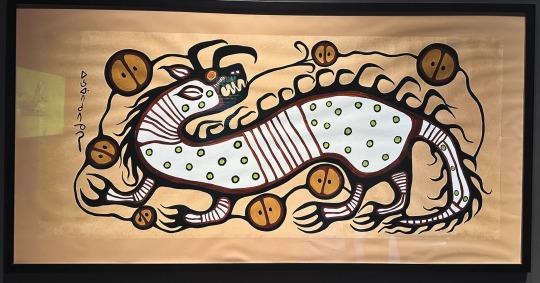
Mishipashoo (Water Spirit) Norval Morriseau 1974, Acrylic on Paper (replica).
#art#indigenous#indigenous art#anishinaabe#spirit#water spirit#Mishipashoo#great lakes#american art#American Indian art#painting#spirit painting#folklore#American legends#North American folklore
48 notes
·
View notes